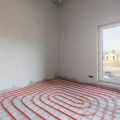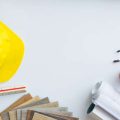Understanding Your Legal Rights and Responsibilities as a UK Homeowner
Before tackling any DIY plumbing repairs, it’s crucial for UK homeowners to understand the legal framework that governs such activities. Plumbing work in domestic properties is regulated by both national legislation and local authority bylaws to ensure safety and compliance with water regulations. The primary legislation is the Water Supply (Water Fittings) Regulations 1999, which aims to prevent waste, misuse, undue consumption, or contamination of water supplies. Additionally, Building Regulations Part G sets out standards for sanitation, hot water safety, and water efficiency.
Homeowners are permitted to undertake certain minor plumbing tasks themselves; however, more complex works—such as installing new water systems or altering existing pipework—may require notification to your local council or involvement of a certified plumber registered with a Competent Person Scheme (e.g., WaterSafe). Failure to comply with these regulations can result in fines, enforcement action, or even invalidation of home insurance policies.
| Legislation/Regulation | Scope | Homeowner Responsibilities |
|---|---|---|
| Water Supply (Water Fittings) Regulations 1999 | Prevents water contamination and wastage | Ensure all fittings and installations meet regulatory standards |
| Building Regulations Part G | Covers sanitation, hot water, and water efficiency | Compliance required for major plumbing changes |
| Local Authority Bylaws | May impose additional restrictions or approvals | Check with your local council before starting work |
In summary, while there is room for DIY within defined limits, UK homeowners must be diligent in understanding the scope of permissible work under current laws. Always consult official guidance or seek professional advice if unsure about the legal implications of your planned plumbing repairs.
Common DIY Plumbing Tasks: What’s Safe and Permitted?
For UK homeowners, carrying out minor plumbing repairs can often be a straightforward way to maintain your property and avoid unnecessary call-out charges. However, it is essential to understand which tasks are considered safe and legally permissible without the need for a qualified professional. Below is a breakdown of typical plumbing jobs that most homeowners can undertake on a DIY basis, provided they have the appropriate tools and follow safety guidelines.
Permitted Minor Plumbing Repairs
UK regulations allow homeowners to complete certain low-risk plumbing repairs themselves, especially those that do not involve direct modifications to mains water supplies or gas-connected appliances. The table below outlines common tasks that are generally safe for DIY:
| Task | Description | Considerations |
|---|---|---|
| Fixing Leaking Taps | Replacing washers or cartridges in dripping taps. | Ensure water supply is turned off before starting. |
| Unblocking Drains | Clearing minor blockages in sinks, baths, or showers using plungers or chemical cleaners. | Avoid harsh chemicals that may damage pipes or harm the environment. |
| Replacing Shower Heads | Fitting new shower heads or hoses to existing fittings. | Check compatibility with existing fixtures. |
| Bleeding Radiators | Releasing trapped air from radiators to improve heating efficiency. | Use a radiator key and protect flooring from any water spillage. |
| Tightening Loose Pipe Fittings | Slightly tightening joints and fittings on visible pipework to prevent leaks. | Avoid over-tightening, which can cause damage. |
Legal Boundaries for DIY Plumbing
It is important to note that UK law restricts homeowners from performing certain plumbing works that could pose risks to health or safety. For example, work involving unvented hot water cylinders, altering mains water connections, or any gas-related installations must be carried out by a qualified engineer holding the relevant certifications (such as Gas Safe registration).
Best Practice Tip
If you are ever uncertain about the scope of a repair, it is always prudent to consult your local authoritys building control department or seek advice from a certified plumber. This approach will help ensure compliance with UK regulations and protect both your home and personal safety.

3. Tasks That Require a Qualified Professional
While many minor plumbing repairs can be safely carried out by homeowners, UK law clearly specifies circumstances where only certified plumbers or Gas Safe registered engineers are legally permitted to undertake certain works. This distinction is crucial, not only for safety reasons but also for ensuring compliance with legal and insurance requirements.
When Is a Certified Plumber Required?
Homeowners should engage a qualified professional in the following scenarios:
| Type of Work | Legal Requirement | Relevant Regulation/Authority |
|---|---|---|
| Gas Appliance Installation or Repair (e.g. boilers, gas hobs) | Must be carried out by a Gas Safe registered engineer | Gas Safety (Installation and Use) Regulations 1998; Gas Safe Register |
| Major Pipework Alterations (including mains supply) | Qualified plumber required; notification to water supplier may be necessary | Water Supply (Water Fittings) Regulations 1999; Local Water Authority |
| Work on Unvented Hot Water Storage Systems | Certified installer needed due to high pressure risk | Building Regulations Part G; Competent Person Schemes |
Why Compliance Matters
Failure to use an appropriately qualified professional can result in invalidated home insurance, prosecution, and significant safety hazards. For example, unauthorised work on gas appliances is not only dangerous but also illegal. Similarly, improper modifications to mains pipework or water systems can contaminate the public water supply or cause extensive property damage.
Best Practice: Consult Before You Start
If you are uncertain about whether your planned plumbing work falls under these legal requirements, it is best practice to consult your local authority Building Control office or your water supplier before commencing any alterations. Ensuring the correct procedures are followed protects both your home and your legal standing as a UK homeowner.
4. Essential Tools and Materials: A UK Homeowner’s Checklist
When embarking on any DIY plumbing repairs, having the correct tools and materials is crucial for both safety and efficiency. Fortunately, most British hardware retailers—such as B&Q, Wickes, Screwfix, and local independent stores—stock a comprehensive range of products suitable for domestic plumbing tasks. Below is a curated checklist of common tools and supplies that every UK homeowner should consider having on hand before tackling basic plumbing jobs.
Basic Hand Tools
| Tool | Purpose | Where to Buy |
|---|---|---|
| Adjustable spanner (wrench) | Tightening or loosening nuts and fittings | B&Q, Wickes, Screwfix |
| Pliers (including water pump pliers) | Gripping pipes and connectors | Toolstation, Homebase |
| Screwdrivers (flathead & Phillips) | Removing or securing screws on fixtures | Any hardware retailer |
| Pipe cutter or hacksaw | Cutting copper or plastic pipes | Screwfix, Wickes |
Plumbing-Specific Tools & Consumables
| Item | Use Case |
|---|---|
| PTFE tape (plumber’s tape) | Sealing threaded joints to prevent leaks |
| Basin wrench | Reaching awkward nuts behind sinks |
| Cup plunger & drain snake/auger | Clearing blockages in sinks or toilets |
| Pipes & pipe fittings (copper or push-fit plastic) | Making pipe repairs or extensions |
Safety Equipment
- Protective gloves: To avoid cuts and exposure to chemicals.
- Safety goggles: Especially when cutting metal or using strong cleaning agents.
- Towels or old rags: For cleaning up spills promptly.
- Buckets: Useful for catching residual water during repairs.
Sealants & Compounds
- Silicone sealant: For resealing around baths, basins, and shower trays.
- Plumber’s putty: Ideal for creating watertight seals under taps and drains.
- Chemical drain cleaner (used with caution): For persistent slow drains; always follow manufacturer’s instructions.
A Note on Sourcing Materials in the UK
The above items are widely available from national chains as well as local shops. Many retailers offer click-and-collect services and helpful advice if you are unsure which product best suits your specific repair. Investing in quality tools not only ensures a safer DIY experience but also provides long-term value for future home maintenance needs.
5. Health, Safety, and Insurance Considerations
Before embarking on any DIY plumbing repairs, UK homeowners must give due regard to health, safety, and insurance implications. Understanding best practices not only minimises risk but also ensures compliance with both legal and insurance requirements.
Key Safety Practices
- Switch Off Water Supply: Always isolate the water supply before beginning any plumbing task to prevent accidental flooding or water damage.
- Electrical Awareness: Be mindful of electrical fixtures or wiring near pipes—water and electricity are a hazardous combination.
- Proper Tools and PPE: Use suitable tools for the job and consider wearing gloves, goggles, and appropriate clothing to protect against sharp edges, hot surfaces, or chemicals.
- Ventilation: Ensure adequate ventilation when working with adhesives or chemical sealants to avoid inhalation of fumes.
The Importance of Home Insurance Coverage
Your home insurance policy may be affected by DIY repairs. Insurers often require that plumbing work is carried out competently; substandard DIY can invalidate your policy if it leads to a claim. It is prudent to check the terms of your policy before starting any repairs.
Insurance Checklist Before DIY Plumbing
| Consideration | Action Required |
|---|---|
| Policy Terms | Review exclusions related to DIY work in your buildings or contents insurance. |
| Notification Requirements | Inform your insurer if you plan significant works (e.g., new pipework installation). |
| Professional Certification | Certain jobs may legally require a certified plumber—check if this applies. |
| Evidence of Work | Document repairs with photos/receipts in case evidence is needed for future claims. |
What to Check Before Starting Any DIY Plumbing Work
- Scope of Repair: Confirm the repair is minor and within your skill level—major works should be left to professionals.
- Legal Compliance: Some plumbing tasks require compliance with UK Building Regulations; consult local authority guidance where necessary.
- Tetst Shut-Off Valves: Make sure isolation valves work properly and can stop water flow completely.
- Sourcing Parts: Purchase quality parts compatible with UK systems to ensure durability and compliance.
Caution: When to Call a Professional
If you encounter gas lines, complex boiler connections, or suspect contaminated water supplies, always seek a qualified plumber. The risks of incorrect repair can far outweigh the savings from DIY efforts—and could have serious legal ramifications under UK law.
6. When to Notify Your Water Supplier or Local Authority
UK homeowners undertaking DIY plumbing repairs must be aware that certain works require notification to either the local water supplier or the local authority before they begin. Under the Water Supply (Water Fittings) Regulations 1999, you are legally obligated to inform your water company about specific types of plumbing work to ensure the safety and quality of public water supply. Failure to comply can result in enforcement action or prosecution. Below is a table outlining common scenarios requiring notification:
| Type of Plumbing Work | Notify Water Supplier? | Notify Local Authority? |
|---|---|---|
| Installing a new unvented hot water storage system | Yes | No |
| Extending or altering external pipework | Yes | No |
| Fitting a bidet with upward spray | Yes | No |
| Connecting to a private water supply | No | Yes |
| Major drainage alterations | No | Yes (Building Control) |
How to Notify Your Water Supplier or Local Authority
If your planned work falls under any notifiable category, you should contact your local water supplier—details can be found on your bill or their official website. Most suppliers offer downloadable forms online; these must be completed and submitted, often with supporting diagrams or specifications. For works involving Building Control, such as major drainage changes, notify your local council’s Building Control department using their prescribed process.
Key Steps for Notification:
- Check if your work is listed as notifiable in the regulations or by consulting your suppliers guidance.
- Download and complete the relevant notification form.
- Attach technical drawings or specifications where required.
- Await written approval before commencing work.
- If unsure, seek advice from a WaterSafe registered plumber or legal advisor familiar with UK water regulations.
Summary Advice for Homeowners:
If in doubt, always err on the side of caution and notify the relevant authority. This protects you from legal liability and ensures the integrity of your property’s plumbing system within UK statutory frameworks.


